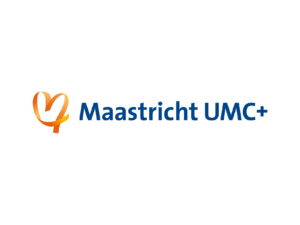Molly is a virtual nurse, otherwise known as a ‘health care avatar’, specialized in heart failure care. The avatar is designed to monitor patients, and she is charged with supporting and guiding them in user-friendly manner. Molly asks the patients how they are doing and then verbally instructs them on how to check their vital signs using the accompanying digital scale and blood pressure meter. Once the checks are done, she reports the results and advises patients about any action that needs taking. The system operates via an app on a mobile phone or tablet.
Over 10 years ago, researchers at the Heart+Vascular Centre at the Maastricht University Medical Centre+ (MUMC+) began exploring digital applications to provide in-home telemedicine to patients with heart failure and developed an telemonitoring tool called MijnHartfalenCoach (‘my heart failure coach’). MijnHartfalenCoach helps users to monitor their own health situation. Around that time, the US firm Sense.lywas developing a chatbot named Molly. They entered Molly into a competition for telemonitoring applications and captured first prize. They were then allowed to test the chatbot outside the United States, and they contacted MUMC+ in view of its experience in telemonitoring patients with heart failure. “Molly didn’t have many “brains” at the time and needed to be trained. But we ourselves lacked attractive ways of communicating with patients. So we combined Molly’s interface with the health care content of MijnHartfalenCoach,” reports professor Hans-Peter Brunner-La Rocca, cardiologist at MUMC+.
Molly has been tested in a pilot study, which found it an effective form of care – the number of hospital visits declined and the patients felt at ease. “It’s important that the technology be applied as an assistive resource with a clearly defined purpose – not as an aim in itself,” Josiane Boyne, researcher and Coordinator for Heart Failure Care at MUMC+, emphasises. One must sometimes take a step backwards and evaluate both the intervention and the patient care process surrounding it. Changes do not just take place effortlessly, and in a hospital things can have unforeseen ramifications. Innovations must not be superimposed for direct integration into the standard patient care processes; room has to be created to innovate and learn from one’s errors.
Moving forward, Molly will be shifting a good deal more towards self-care, in which patients exercise more self-direction in their own health situation. A new version of the virtual nurse will require many more capabilities, such as providing treatment recommendations, determining diagnoses and prescribing drugs. It will have to be self-teaching and capable of adjusting to situations. But it must also be user-friendly and motivational for every patient group, irrespective of education, age or gender. “The application can also benefit other patient groups as well as people with heart failure,” Brunner-La Rocca observes.
MUMC+ has recently received a large EU grant to further develop the application. In that subsequent research, patients and health care providers will be extensively consulted, to keep the development process demand-driven As Boyne notes, ‘We concentrate not just on the technical features of the application, but also on the human aspect.’ The whole system of stakeholders should also be taken into consideration during the implementation process. People still think too narrowly within data silos, whereas combining various datasets could open many prospects for health care improvement.


